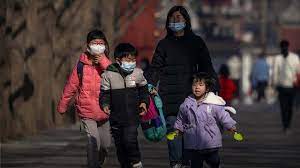China’s Three-Child Policy:

In a major policy shift aimed at increasing the country’s declining birth rate, China relaxed its previous two-child norm and endorsed a three-child policy mooted by the ruling Communist Party.
- The resolution was passed along with several others during a meeting of the National People’s Congress (NPC).
- Earlier this year, after China’s census data showed population growth slipping to its slowest rate since the 1950s, the country announced that it would allow three children per married couple — five years after it first relaxed its controversial one-child policy to two.
- China’s one-child policy, which had been enforced by former leader Deng Xiaoping in 1980, had remained in place until 2016, when fears of a rapidly ageing population undermining economic growth forced the ruling Communist Party to allow two children per married couple.
- While the relaxation did result in some improvement in the proportion of young people in the country, the policy change was deemed insufficient in averting an impending demographic crisis.
- Even as a three-child policy has now been announced, many remain skeptical, wondering how it would be able to address challenges that the 2016 change could not, due to factors such as higher cost of living and long working hours.
- The United Nations expects China’s population to begin declining after 2030, but some experts say this could happen as early as in the next one or two years.
- By 2025, the country is set to lose its ‘most populous’ tag to India, which in 2020 had an estimated 138 crore people, 1.5 per cent behind China




